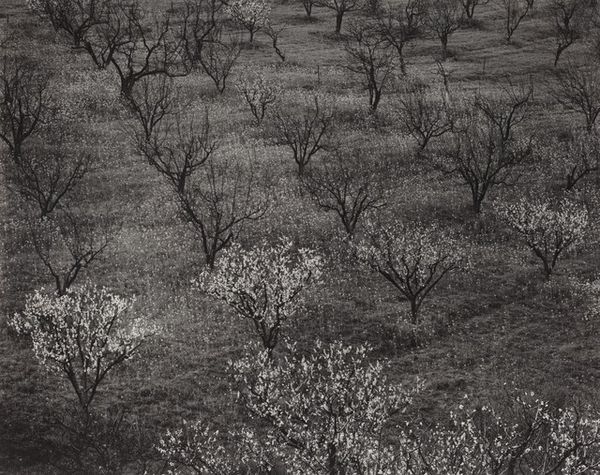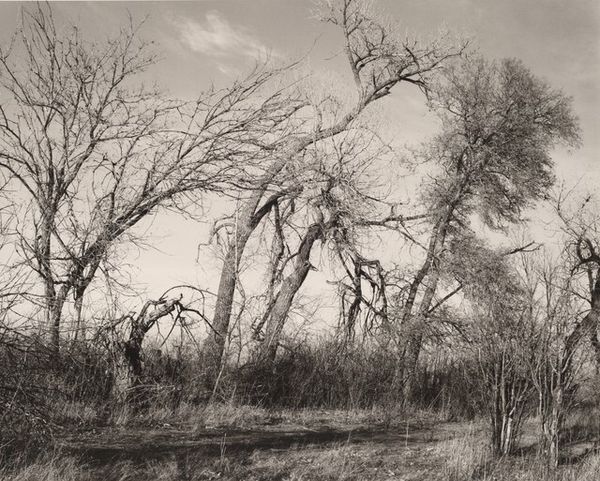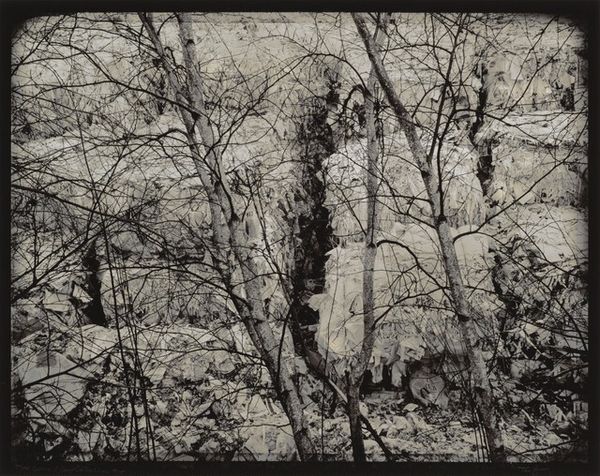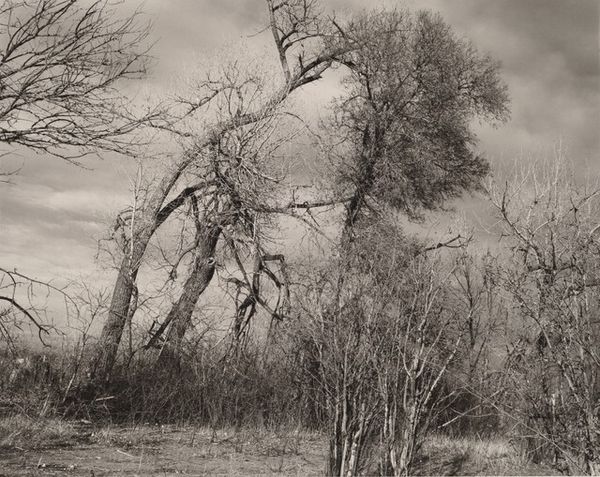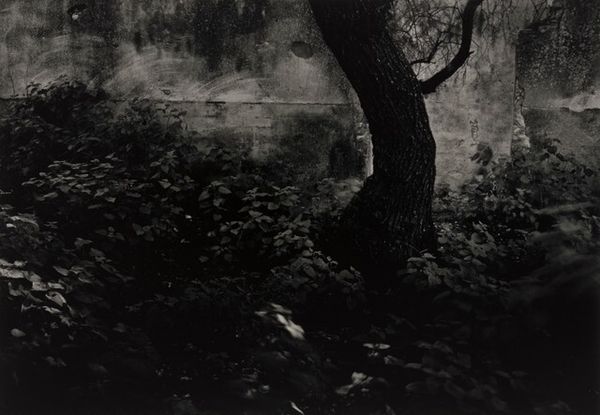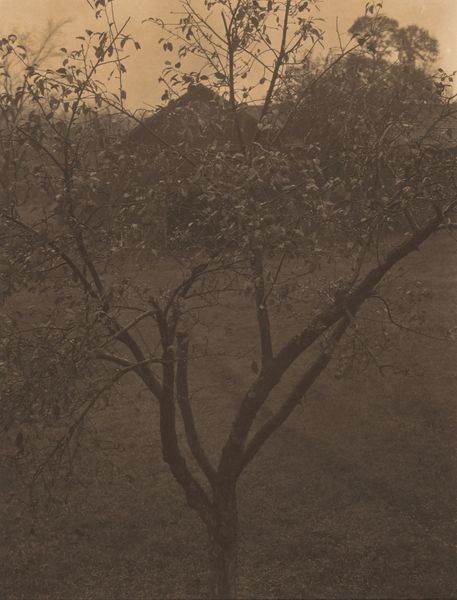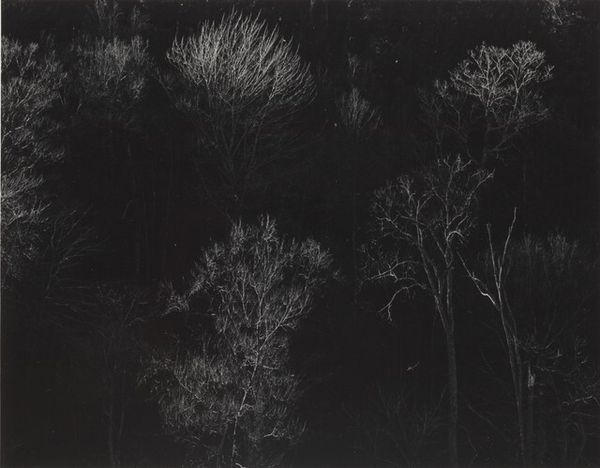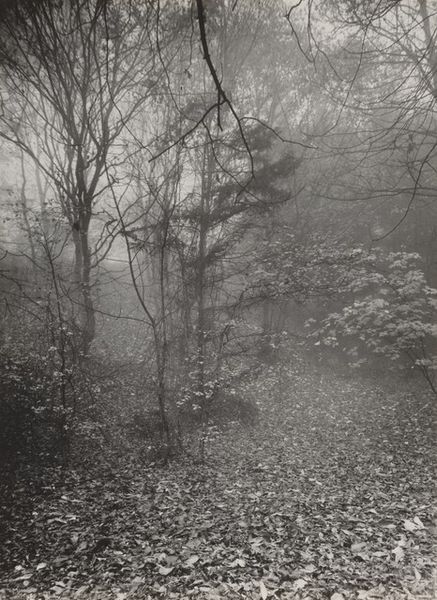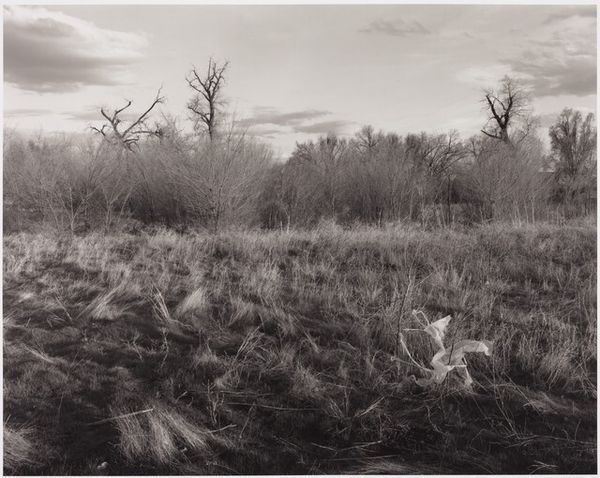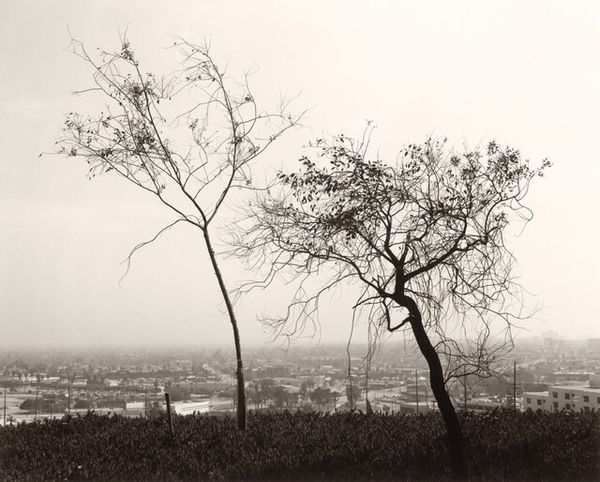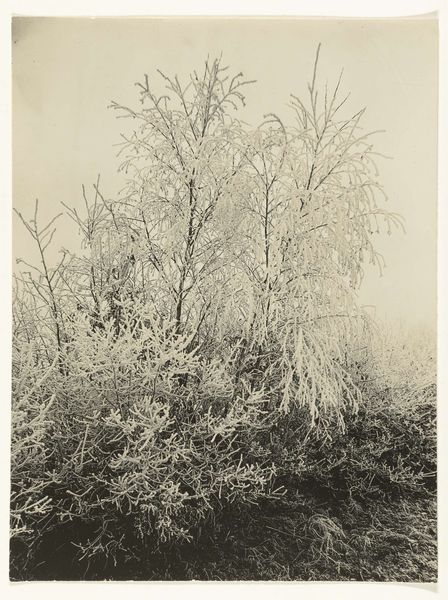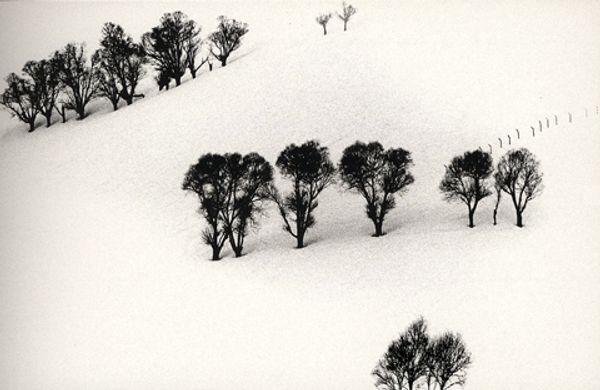
#
natural shape and form
#
black and white photography
#
snowscape
#
countryside
#
eerie mood
#
monochrome photography
#
gloomy
#
monochrome
#
mist
#
shadow overcast
Dimensions: overall: 49.3 x 38.1 cm (19 7/16 x 15 in.)
Copyright: National Gallery of Art: CC0 1.0
Editor: So this is Ansel Adams’ "Oak Tree, Rain, Sonoma County, California" taken sometime between 1960 and 1980. Looking at it, I'm struck by the contrasting textures - the smooth, almost blurry foreground against the detailed bark of the tree. How do you interpret this work? Curator: Primarily through its formal qualities. The dramatic tonal range, characteristic of Adams’ work, establishes a clear hierarchy. Note the strategic placement of the oak, acting as a central anchor. Its stark silhouette provides a visual counterpoint to the diffuse light, further enhanced by the horizontal thrust of the wooden fence that creates an echo effect that contains all these forces into place. Editor: That's interesting, I hadn't thought about how the fence almost acts as a barrier. What is the importance of using solely black and white photography as a visual form of expressing an image of trees? Curator: The choice of monochrome invites close inspection of the composition. Colour can often distract from pure form and tonal variation. In this context, stripping away colour forces the viewer to appreciate Adams’ mastery of light and shadow, creating a structured contrast across forms. Do you agree with my formalist interpretation? Editor: Absolutely. Focusing on the relationship between those formal elements helps to bring out so many of the image’s complexities. Curator: Precisely. Considering the formal components is key, because it reveals intentional composition in photographic pieces such as this. Editor: Thanks for expanding my view on that, this formal breakdown certainly made the picture easier to approach and unpack as a photograph.
Comments
No comments
Be the first to comment and join the conversation on the ultimate creative platform.
